Load Regulation
| Test | 12V | 5V | 3.3V | 5VSB | DC/AC (Watts) | Efficiency | Fan Speed (RPM) | PSU Noise (dB[A]) | Temps (In/Out) | PF/AC Volts |
| 10% | 8.152A | 1.974A | 1.971A | 0.989A | 119.997 | 88.875% | 0 | <6.0 | 48.05°C | 0.985 |
| 12.070V | 5.066V | 3.349V | 5.055V | 135.073 | 40.03°C | 114.82V | ||||
| 20% | 17.326A | 2.962A | 2.958A | 1.188A | 239.957 | 91.886% | 0 | <6.0 | 50.48°C | 0.992 |
| 12.066V | 5.063V | 3.347V | 5.05V | 261.117 | 40.73°C | 114.76V | ||||
| 30% | 26.786A | 3.457A | 3.452A | 1.388A | 359.164 | 92.381% | 0 | <6.0 | 52.26°C | 0.994 |
| 12.063V | 5.062V | 3.346V | 5.045V | 388.71 | 41.23°C | 114.72V | ||||
| 40% | 36.347A | 3.952A | 3.947A | 1.588A | 479.531 | 92.36% | 0 | <6.0 | 54.34°C | 0.998 |
| 12.059V | 5.06V | 3.345V | 5.039V | 519.2 | 41.81°C | 114.69V | ||||
| 50% | 45.526A | 4.943A | 4.936A | 1.788A | 599.318 | 92.168% | 0 | <6.0 | 58.15°C | 0.998 |
| 12.055V | 5.058V | 3.343V | 5.035V | 650.241 | 42.22°C | 114.64V | ||||
| 60% | 54.767A | 5.934A | 5.926A | 1.988A | 719.837 | 91.68% | 395 | <6.0 | 42.68°C | 0.999 |
| 12.051V | 5.056V | 3.341V | 5.03V | 785.207 | 57.49°C | 114.6V | ||||
| 70% | 63.949A | 6.926A | 6.919A | 2.189A | 839.551 | 90.77% | 610 | 13.1 | 43.23°C | 0.999 |
| 12.048V | 5.054V | 3.339V | 5.025V | 924.919 | 56.36°C | 114.56V | ||||
| 80% | 73.220A | 7.918A | 7.912A | 2.29A | 959.531 | 90.066% | 837 | 24.6 | 43.96°C | 0.998 |
| 12.042V | 5.051V | 3.336V | 5.022V | 1065.37 | 56.36°C | 114.51V | ||||
| 90% | 82.825A | 8.416A | 8.396A | 2.392A | 1079.352 | 89.419% | 1065 | 31.9 | 44.04°C | 0.998 |
| 12.036V | 5.049V | 3.335V | 5.017V | 1207.094 | 56.26°C | 114.48V | ||||
| 100% | 92.242A | 8.915A | 8.911A | 2.998A | 1199.302 | 88.731% | 1226 | 36.3 | 45.69°C | 0.998 |
| 12.029V | 5.047V | 3.333V | 5.005V | 1351.659 | 56.23°C | 114.42V | ||||
| 110% | 101.589A | 9.911A | 9.997A | 2.999A | 1319.977 | 87.879% | 1580 | 42.7 | 46.84°C | 0.998 |
| 12.025V | 5.045V | 3.331V | 5.002V | 1502.132 | 57.74°C | 114.36V | ||||
| CL1 | 0.115A | 17.895A | 17.867A | 0A | 151.27 | 84.126% | 394 | <6.0 | 43.51°C | 0.988 |
| 12.065V | 5.046V | 3.336V | 5.106V | 179.812 | 51.37°C | 114.79V | ||||
| CL2 | 0.115A | 24.759A | 0A | 0A | 126.233 | 82.589% | 780 | 21.9 | 42.78°C | 0.989 |
| 12.067V | 5.043V | 3.341V | 5.117V | 152.841 | 48.65°C | 114.81V | ||||
| CL3 | 0.115A | 0A | 24.705A | 0A | 83.881 | 76.682% | 761 | 20.8 | 41.91°C | 0.978 |
| 12.065V | 5.061V | 3.339V | 5.071V | 109.388 | 47.13°C | 114.82V | ||||
| CL4 | 99.714A | 0A | 0A | 0A | 1199.922 | 89.162% | 1225 | 36.3 | 44.58°C | 0.998 |
| 12.033V | 5.057V | 3.341V | 5.032V | 1345.763 | 53.29°C | 114.44V |
Load regulation is tight on all rails.
| Test | 12V | 5V | 3.3V | 5VSB | DC/AC (Watts) | Efficiency | Fan Speed (RPM) | PSU Noise (dB[A]) | Temps (In/Out) | PF/AC Volts |
| 20W | 1.230A | 0.494A | 0.493A | 0.197A | 20 | 69.436% | 0 | <6.0 | 39.04°C | 0.799 |
| 12.064V | 5.065V | 3.347V | 5.065V | 28.809 | 36.02°C | 114.83V | ||||
| 40W | 2.708A | 0.691A | 0.69A | 0.296A | 40.001 | 74.712% | 0 | <6.0 | 42.16°C | 0.879 |
| 12.068V | 5.066V | 3.348V | 5.064V | 53.543 | 37.75°C | 114.82V | ||||
| 60W | 4.186A | 0.888A | 0.887A | 0.395A | 60.002 | 79.516% | 0 | <6.0 | 44.61°C | 0.964 |
| 12.070V | 5.067V | 3.349V | 5.063V | 75.457 | 38.52°C | 114.82V | ||||
| 80W | 5.660A | 1.085A | 1.084A | 0.494A | 79.946 | 85.147% | 0 | <6.0 | 46.14°C | 0.977 |
| 12.071V | 5.067V | 3.35V | 5.062V | 93.9 | 39.55°C | 114.81V |
A look at the light loads table is always useful, because the PSU will usually operate at light loads.
Ripple Suppression
| Test | 12V | 5V | 3.3V | 5VSB | Pass/Fail |
| 10% Load | 16.2 mV | 12.9 mV | 12.7 mV | 8.0 mV | Pass |
| 20% Load | 22.9 mV | 19.7 mV | 18.5 mV | 11.2 mV | Pass |
| 30% Load | 19.9 mV | 16.8 mV | 16.6 mV | 10.6 mV | Pass |
| 40% Load | 19.4 mV | 17.0 mV | 16.1 mV | 10.5 mV | Pass |
| 50% Load | 21.2 mV | 16.7 mV | 16.0 mV | 10.1 mV | Pass |
| 60% Load | 19.6 mV | 16.3 mV | 16.0 mV | 10.0 mV | Pass |
| 70% Load | 19.8 mV | 16.1 mV | 15.6 mV | 10.8 mV | Pass |
| 80% Load | 25.9 mV | 18.1 mV | 18.5 mV | 10.9 mV | Pass |
| 90% Load | 22.3 mV | 18.1 mV | 17.8 mV | 11.2 mV | Pass |
| 100% Load | 30.6 mV | 17.4 mV | 18.3 mV | 11.5 mV | Pass |
| 110% Load | 29.2 mV | 17.6 mV | 19.3 mV | 11.5 mV | Pass |
| Crossload 1 | 21.9 mV | 19.6 mV | 19.7 mV | 10.7 mV | Pass |
| Crossload 2 | 21.1 mV | 22.5 mV | 16.5 mV | 10.2 mV | Pass |
| Crossload 3 | 19.9 mV | 16.1 mV | 20.0 mV | 10.6 mV | Pass |
| Crossload 4 | 28.5 mV | 15.8 mV | 16.3 mV | 10.4 mV | Pass |
Ripple suppression is good.
Pages:
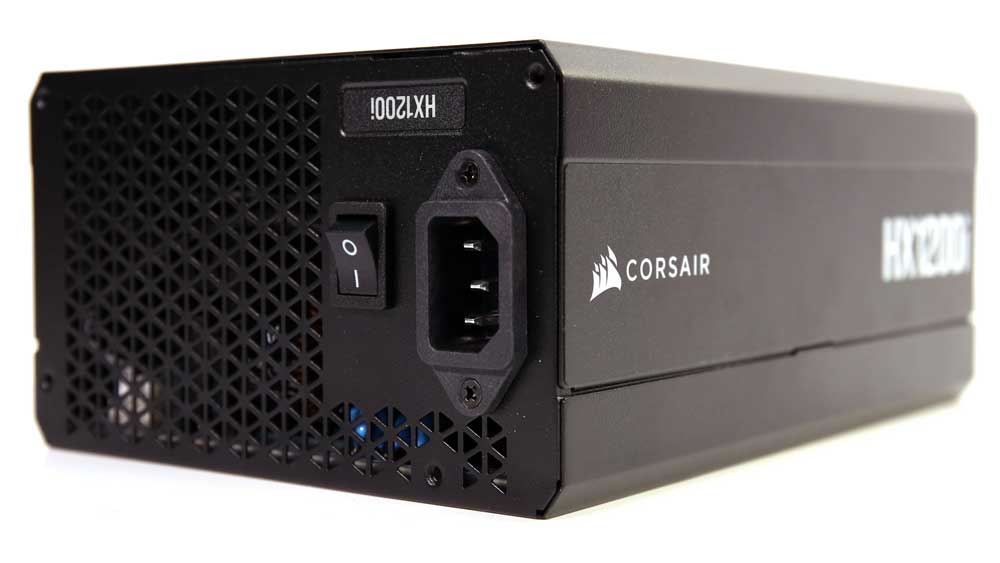
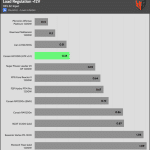
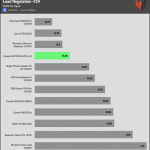
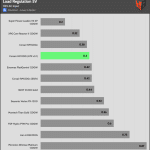
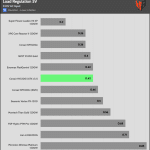

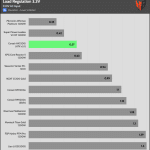
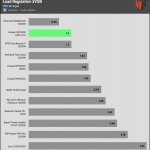
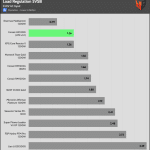
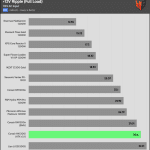
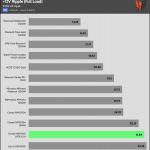
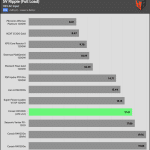
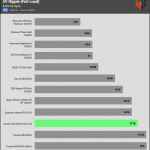
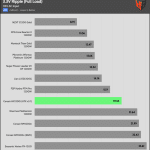
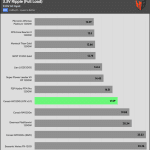
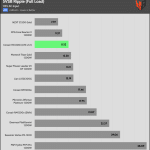
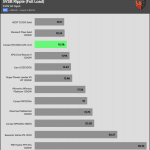
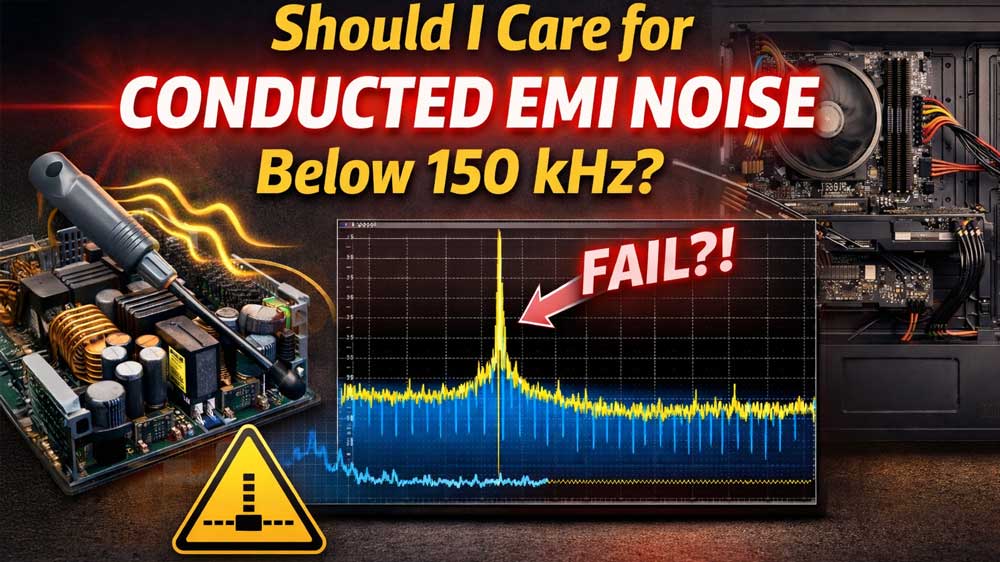
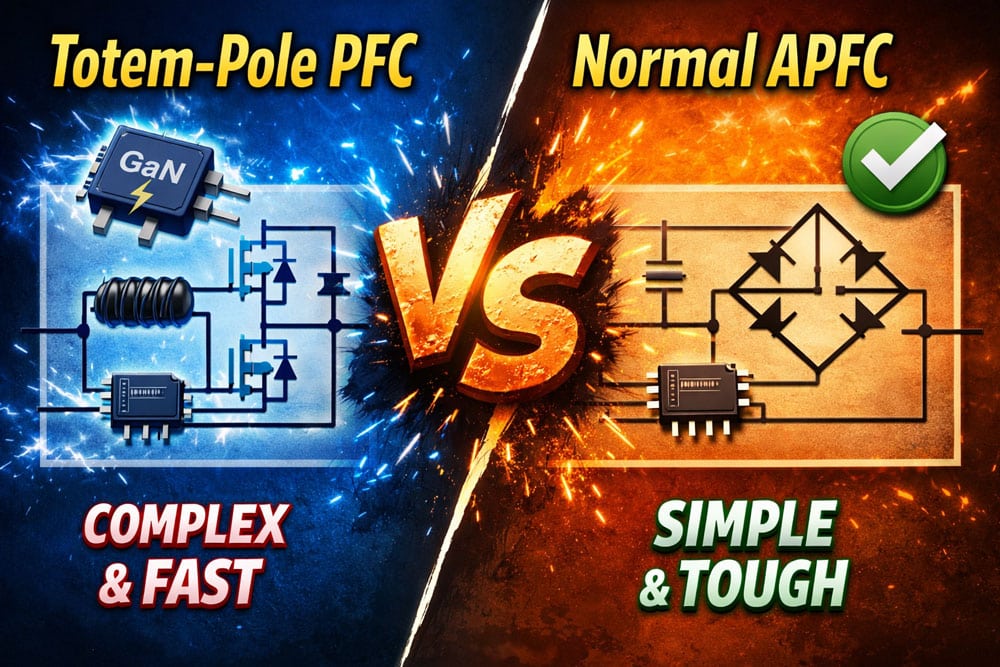
Hi,
Thanks for the in-depth review
For the Super Flower Leadex VII XP 1200W ATX v3.0 PSU Review, you categorized its ripple suppression as “exceptional at 12V and good enough on the other rails.”
Yet for this review, you mearly said “Ripple suppression is good”, though by the charts, it seems that ripple suppression on this PSU is better than the Super Flower.
Is the ripple suppression on this PSU better than the Super Flower or is there something that makes the Super Flower stand above the Corsair?
Thanks!
I didn’t quite understand your question. In any case, ripple suppression in the SF unit is very good, mainly because of the 12V rail’s performance, which matters the most.
“I want to start with this first. From now on, I won’t often do Corsair reviews since I don’t communicate with Corsair’s PR team.”
Can I ask what’s the story here? I wasn’t sure if there was any bad blood between you and Corsair. I can say it will be sad to see fewer corsair PSU reviews, because they’re a big player in the PSU space, and your reviews are always so thorough.
There is no bad blood; it’s just a matter of poor communication with the corresponding team.
Bonjour,
Franchement vous faites un formidable travail en profondeur dans de nombreux domaines informatique que vous maitrisez et que vous ne faites partager pour ne pas commettre d’erreur dans nos choix. Voilà j’ai opté pour une 5090 Astral OC pour mon nouvel ordinateur. Mais voilà ayant vu sur le salon Computex l’arrivé en début d’année prochaine, de la gamme Optiguard de Seasonic. Je souhaiterais avoir une alimentation de qualité mais sans me ruiner non plus car je compte bien m’acheter ce modèle Optiguard bien sûr quand il sera passer entre vos mains, pour voir si le jeu en vaut la chandelle. Donc j’avais jeter mon dévolu sur la Prime 1600W et Cybenetics m’a indiqué que même si elle n’est pas en ATX 3.1 le câble qui relie l’alimentation à la carte graphique fera le job. Qu’en est il dans les faits ? Dois je demander à Seasonic un nouveau câble ou bien utiliser celui qui sera j’imagine fourni avec l’Asus Astral OC 5090 ? Enfin, je me suis dit en moi même mais si j’opte pour une alimentation ATX 3.0 autant partir sur une AX1600i dans ce cas. Mais voilà je suis perdu, totale. Car si une alimentation moins cher et tout aussi véloce et performante avec une protection de ventillateur et qui ne fait pas griller ma carte graphique existe chez un autre constructeur je suis ouvert à cette proposition. Merci d’avance pour votre aide précieuse.
Hello, Frankly you do a wonderful job in depth in many areas of computing that you master and that you do not share to make mistakes in our choices. I opted for a 5090 Astral OC for my new computer. But then I saw at Computex that Seasonic’s Optiguard range would be arriving early next year. I’d like to have a quality power supply, but I don’t want to break the bank either, as I intend to buy this Optiguard model once it’s in your hands, to see if it’s worth the money. So I’d set my sights on the Prime 1600W, and Cybenetics told me that even if it’s not ATX 3.1, the cable linking the power supply to the graphics card will do the job. What’s the reality? Should I ask Seasonic for a new cable, or use the one I imagine will be supplied with the Asus Astral OC 5090? Well, I said to myself, if I opt for an ATX 3.0 power supply, I might as well go for an AX1600i. But now I’m totally lost. Because if a less expensive power supply with the same speed and performance, with fan protection that doesn’t fry my graphics card, exists from another manufacturer, I’m open to this proposal. Thank you in advance for your help.
Hi, thanks for your high quality reviews and your hard work! Just bought an Astral RTX 5090 OC and want to pair it with a high quality PSU. Had in the past mostly high quality ATX 2.0 Seasonic like the TX-1000, do you recommend the newer ones due to be released – like the TX-1300, or you have different recommendations for a silent, reliable PSU that can handle the GPU load?
The Seasonic TX line is very good, although expensive. If you can afford it, go for it.
Thank you very much for all the reviews, analyses and hard work.
I am in the market for a high-end PSU, and ended up eyeing this Corsair HX1200i (or HX1500i) and the cooler master X silent max 1300. Which one would you consider the most reliable?
Reliability also has to do with luck and the mains grid quality, since all PSUs you mention have high build quality and good parts. I would probably go for the HX1500i, because the CM unit is super expensive.
Thank you!